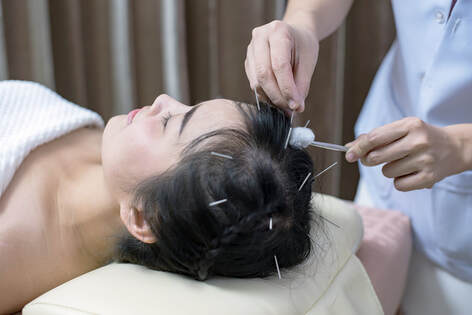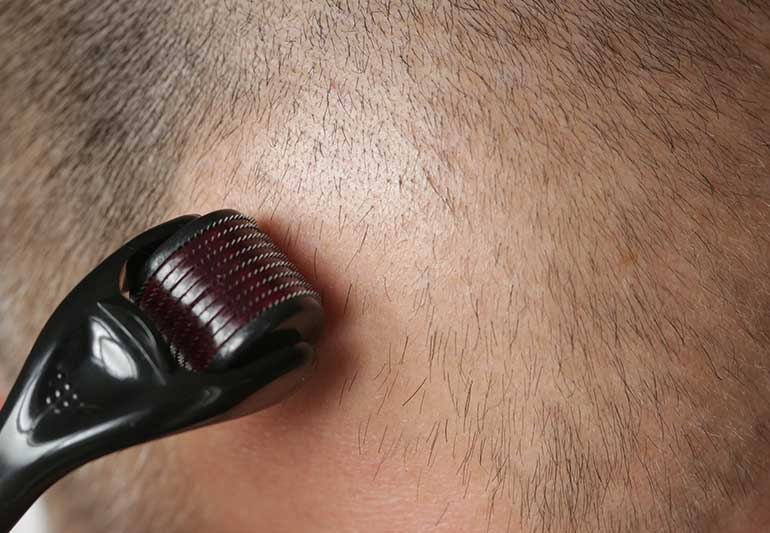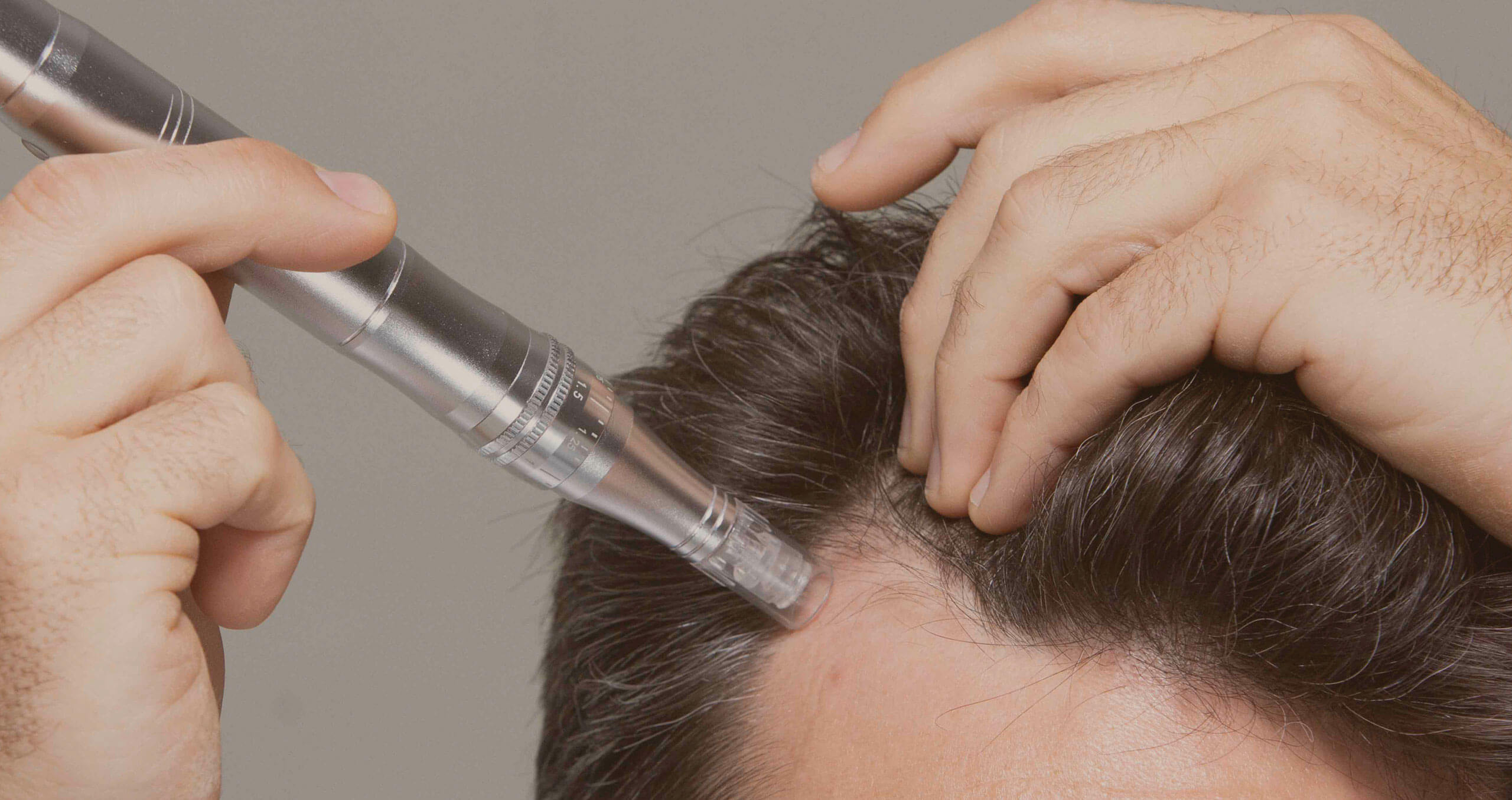Currently, the search for treatments for hair loss is garnering significant attention and sparking debates. You might have come across acupuncture as a treatment method. While this approach is known for addressing issues like acne and premature aging, its effectiveness for hair-related concerns may be less familiar to you. If you are not well-versed in this area, let’s explore together how acupuncture is believed to be effective in treating hair loss in this article.

WHAT IS ACUPUNCTURE?
Acupuncture, an alternative medical therapy with roots dating back thousands of years in China, has gained popularity for its potential to address various ailments, including back pain and headaches. According to traditional Chinese medicine (TCM), the body has a network of meridians through which qi flows. The balance and flow of qi are believed to be essential for maintaining health, and disruptions in this flow are thought to lead to illness. The goal of acupuncture is to restore the balance and flow of qi by inserting needles at specific points along the meridians. Acupuncture points are thought to correspond to specific organs or systems in the body. The needles used in acupuncture are very thin and are typically inserted just beneath the skin, causing minimal discomfort.
ACUPUNCTURE FOR HAIR LOSS TREATMENT
Acupuncture is often credited with treating a wide range of conditions, and while some claims are supported by research—particularly in relieving low-back pain and neck pain—others, such as its effectiveness in addressing hair loss, have less conclusive evidence. Nevertheless, there is some indication that acupuncture may offer benefits for at least certain types of hair loss.
ACUPUNCTURE FOR MALE PATTERN BALDNESS
While there’s no evidence supporting acupuncture for male pattern baldness influenced by genetics and hormonal changes, a study suggests its potential efficacy for Alopecia areata. This autoimmune-driven hair loss condition involves immune system attacks on hair follicles, resulting in scalp patches without hair. The reasons behind acupuncture’s effectiveness for Alopecia areata are unclear, but it may be linked to improved blood flow and skin circulation—a recognized benefit of acupuncture. This could stimulate hair follicles, nerves, and blood vessels, potentially preventing further hair loss. Follow-up treatments may then support regrowth.
ACUPUNCTURE FOR HAIR LOSS IN FEMALES
Female pattern hair loss, a prevalent form of hair loss in women, is attributed to genetic factors and hormonal fluctuations. Once again, current research does not endorse the use of acupuncture as a treatment for hair loss in women. Nevertheless, women grappling with alopecia areata may find relief and potential regrowth through acupuncture. The minute needles employed in acupuncture sessions could aid in stimulating the scalp, enhancing the likelihood of hair restoration.
HOW DOES THE PROCESS WORKS?
Acupuncture for hair loss involves the strategic insertion of tiny sterling needles into specific scalp points to enhance blood flow and stimulate hair growth. The practitioner conducts a thorough assessment of internal organ health, identifying potential imbalances linked to hair loss. The primary goal is to restore balance and promote hair growth, with a recommended minimum of ten sessions. These sessions focus on specific acupuncture points, particularly along the hairline, to effectively stimulate hair growth. Compared to alternative treatments, acupuncture exhibits higher success rates, typically ranging from 85% to 95%. Treatment costs vary based on the clinic and session frequency, with initial assessments averaging $90 to $125 and follow-up sessions costing an average of $45 to $80 each.
DOES ACUPUNCTURE HELP PREVENT HAIR LOSS?
Before addressing hair loss, it’s crucial to identify its type and root cause. Distinguishing between issues at the hair root or on the strands is essential, as sometimes the concern is breakage rather than lack of growth. Moisturizing and strengthening strands are key for breakage prevention. For hair loss at the root, factors may include hair care practices, trauma, nutrient deficiencies, or genetics. While acupuncture may not directly address breakage, it could potentially target issues at the hair follicle. Acupuncture has been used for various concerns, including medical conditions like asthma and chronic joint pain. Regarding hair loss, acupuncture might be beneficial in cases where poor blood flow or immune responses affect hair follicles.
However, for serious underlying conditions like alopecia or scarring alopecia, acupuncture may not be effective, and dermatological consultation is recommended. A dermatologist can provide appropriate treatment, and it’s advised to see a doctor for a blood test to rule out potential serious medical conditions.
SIDE EFFECTS OF GETTING ACUPUNCTURE ON THE HEAD
Acupuncture, as a generally well-tolerated alternative medical therapy, may be accompanied by allergic reactions in some individuals, particularly to the needles or products used during sessions such as oils, lotions, or aromatherapy products. When contrasted with traditional hair loss treatments like hormone therapy, prescription medicine, laser therapy, or surgery, acupuncture stands out for its minimal potential risks or complications. It represents a comparatively low-risk option for treating hair loss, especially when used in conjunction with medication; but like any medical procedure, it can carry some potential side effects:
- Headache
- Soreness
- Bruising
- Muscle twitching
- Minor bleeding
The potential side effects of acupuncture may be heightened when not under the care of a licensed professional. Choosing an unlicensed and inexperienced practitioner puts you at an increased risk of infection and injury. Opting for a trained and qualified practitioner significantly minimizes these risks.
CONCLUSION
The article has clearly outlined how effective acupuncture is in treating hair loss, hasn’t it?This treatment method not only leaves no scars but can also help improve hair loss conditions better than other approaches. If you seek assistance from experts and consult with a certified dermatologist for added safety.
FAQS
- Does acupressure regrow hair?
No, the effectiveness of acupressure in regrowing hair is not well-supported by scientific evidence. While it may have positive effects on overall well-being, relying solely on acupressure for significant hair regrowth is not substantiated.
- Is acupuncture safe for the scalp?
Yes, acupuncture is generally considered safe for the scalp when performed by a licensed and experienced practitioner.
- Who is acupuncture not recommended for?
Acupuncture may not be recommended for individuals with bleeding disorders or those with a fear of needles. It is essential to consult with a healthcare professional to determine if acupuncture is suitable for specific health conditions.
- What are the 5 forbidden acupuncture points?
The five forbidden acupuncture points are those on the heart, lung, pericardium, liver, and spleen during pregnancy.




